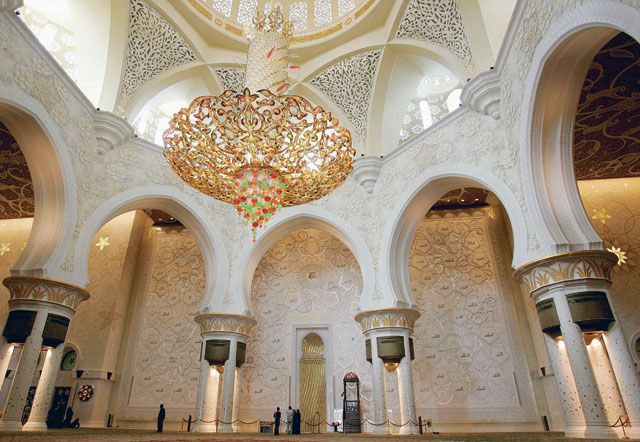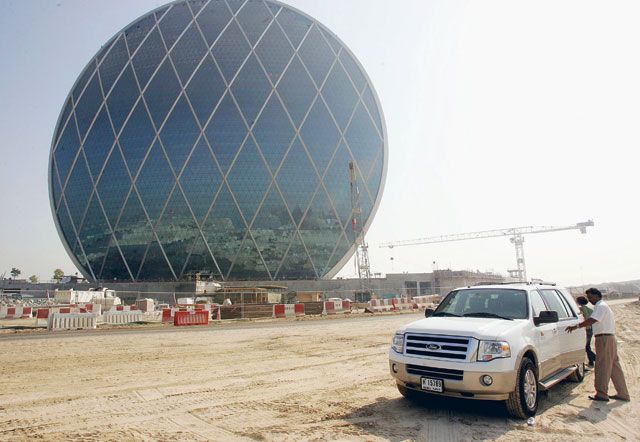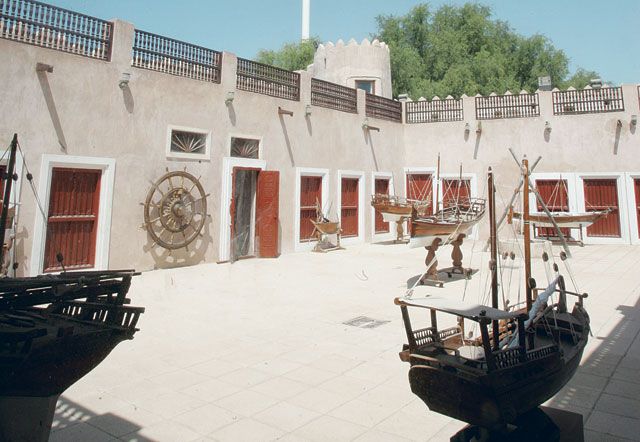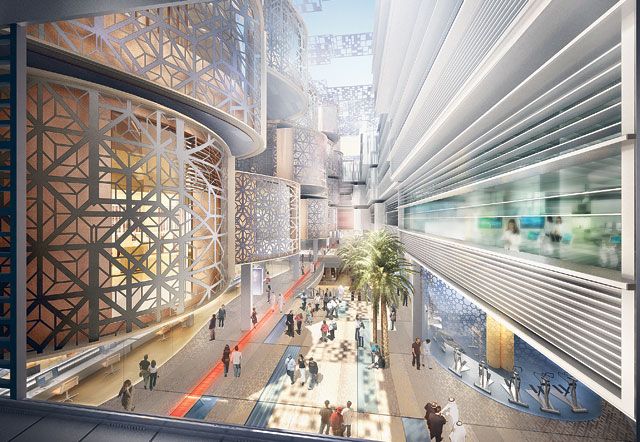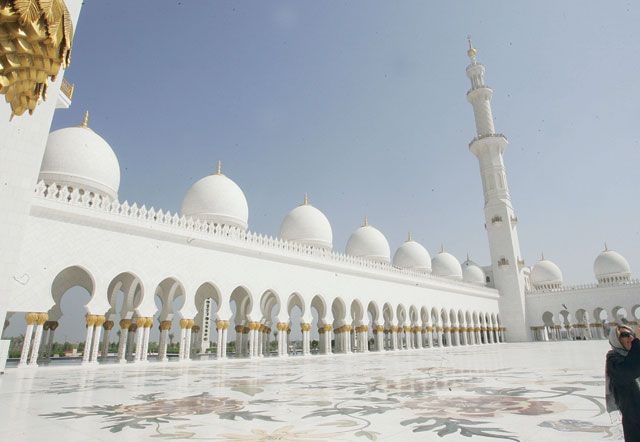On November 1 the inaugural Abu Dhabi Grand Prix, the championship finale, will take place on the all-new Yas Marina Circuit which features a straight that runs through a hotel, a pit-exit tunnel, and a stunning waterfront section.
The Grand Prix is big news for Abu Dhabi and is sure to catapult the emirate into the global sporting spotlight.
Before this F1 showcase gets under way, I decided to spend a day in Abu Dhabi to take in the sights and sounds that will greet the thousands of sports fans who are heading over for the event.
The road to success
Early in the morning my colleague and I hopped in a rather fancy 4x4 and embarked on Arabian Adventures' Capital Adventure – Tour of Abu Dhabi. Arabian Adventures is a destination management company providing a range of tours, safaris and activities in the UAE.
Our guide Tony Pillai, who sat next to our driver Pandaiyan, was eager to tell us about the success and growth of both Dubai and Abu Dhabi in terms of natural resources, infrastructure, services and architecture, as we made our way to the capital. We passed the world's largest man-made port at Jebel Ali as well as an electricity powerhouse producing natural gas, coupled with a desalination plant, and drove for about 90 minutes along the coastal desert road lined with acacia trees – and several radars.
As we got closer to Abu Dhabi, we stopped to take some pictures of the new Aldar Headquarters at Al Raha Beach (still under construction). Scaling a height of approximately 110 metres, the first totally spherical building in the Middle East features a futuristic aluminium and glass exterior.
Landmarks with a 'wow' factor
Our first official stop was to visit the majestic Shaikh Zayed Bin Sultan Al Nahyan Mosque. After covering up with an abaya and a hijab, we entered the massive religious structure which was named after the late president of the UAE who now rests in a large mausoleum next to the mosque where imams relay to continuously read from the Quran and only stop for the five daily prayers.
Designed by Iranian artist Ali Qaliqi and featuring a 115-metre high minaret, 1,084 columns and 82 domes covered with gold, the mosque took 12 years to complete at a cost of Dh2.167 billion and opened during Ramadan in 2007.
It covers 22,000 square metres (five football fields) and can hold up to 40,000 worshippers. Several records have been broken by the mosque, such as the world's biggest carpet (7,119 square metres, 48 tons, 2.268 million knots), biggest chandelier made from German Swarovski crystals (15 by 10 metres) and largest dome of its kind (70 metres high).
Standing in the middle of the central gigantic courtyard is impressive as the sun reverberates on the white marble floor, decorated with inlaid floral decoration and surrounded by arcaded galleries. Inside, the calligraphy work is laid out in an elaborated scheme of floral and vegetal motifs. The 99 names of Allah are carved in Kufic script on the front wall of the main prayer room next to a marble mihrab made of a narrow niche (where the imam leads the prayer) decorated in gold-glass mosaic symbolising the shining light of Islam from Makkah.
From the mosque, located on the outskirts of the city, we drove through the busy centre and continued to the Abu Dhabi Cultural Foundation, the capital's arts centre. From there, we saw the birthplace of Abu Dhabi, the White Fort (Qasr Al Husn) which dates back to 1793 and was built as the official residence of the rulers of Abu Dhabi when they moved from the oasis of Liwa to Abu Dhabi island. The fortress is undergoing renovation and will reopen as a museum.
The visit of the foundation, which houses the National Archives, the National Library and the Institute of Culture and Art, was a bit disappointing because being a Saturday, nothing was happening. Nevertheless, we saw heritage items such as musical instruments, knives, small boat replicas and black and white photographs.
The main reason why Arabian Adventures takes its guests to the foundation is to see the Abu Dhabi ruling family tree and a model of old Abu Dhabi city. What came to my mind when I looked at the model is the rapid growth of the capital, which has evolved in a few decades from a small fortress, huts and palm trees to a 21-centuty metropolis. Our guide wanted to show us an area in the foundation where women make handcrafted clothes and objects for sale on weekdays. Traditional Emirati outfits, jewellery and coffee sets are also on display there.
The best catch of the day
The next stop was my favourite part of the Capital Adventure tour. We went to the Fishing Harbour (nothing to report here because it was a weekend day and no fishermen were returning from the sea with fresh catch) and then the Fish Market. That was a blast. It took us a few moments to get used to the fishy odours but then we took great pleasure in walking around the covered and air-conditioned market where both locals and expats of all ages were bargaining for the freshest seafood – enormous prawns, baby sharks (not good), crabs, hammour, barracuda…
At each stall, the vendors dressed in blue overalls and hygiene caps, tried to convince us to buy their colourful food from the sea. One side of the market with rows of tile tables is dedicated to the cleaning and cutting of fish so that people can go home and start cooking without worrying about the rest.
Near the entrance, there is an alley where vendors prepare, season and cook the seafood for people to take home. That's where I wanted to eat but unfortunately, there was no place to sit down and I wasn't going to carry the fish around the rest of the day and wait until our return to Dubai to eat it. Idiot!
Instead we went to Marina Mall for lunch. There the tour guests have about 90 minutes to eat and shop around.
Before heading to Heritage Village, we quickly drove by the second tallest flagpost in the world, at 123 metres, and enjoyed a gorgeous view of the skyline – mixing traditional Arabian architecture and pure modernity – that line the Riviera-style Corniche. Before I looked at the skyline, though, I couldn't help but pause for a long while to gaze at the beautiful turquoise sea. The water in Abu Dhabi is definitely bluer and clearer than in Dubai.
The Heritage Village, also located on the other side of the Corniche, is a reproduction of a traditional Bedouin village, with an old dhow yard and a souk area where visitors can buy leather, glass, pottery, spices, perfumes, daggers, swords and silk. The village features a nice little museum with photographs and artefacts from the region, as well as an authentic wind tower. I enjoyed the irrigation system demonstrating how a bull would pull buckets of water out of a well, which was then dropped in a small curved area before the water flowed through small canals.
We said hi to the bull (a real one) and made our way back to the car. We drove by the famous Emirates Palace Hotel, stopped to click a few pictures and started heading back to Dubai, driving by the Zayed Sports City Stadium, the largest football stadium in the Middle East.


